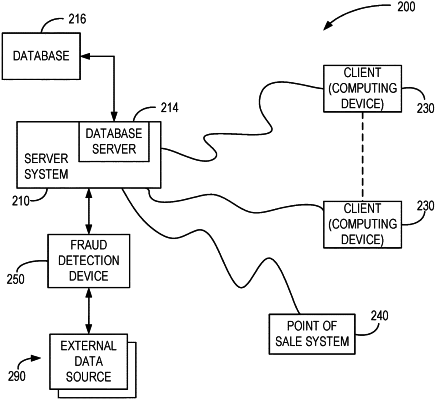| CPC G06Q 20/4016 (2013.01) [G06N 20/00 (2019.01); G06Q 20/409 (2013.01); H04W 12/12 (2013.01)] | 20 Claims |

|
1. A system for detecting fraud within a payment card network, the system comprising:
a memory storing historical transaction data; and
at least one processor configured to execute instructions that cause the at least one processor to:
prepare a set of historical transaction data for machine learning model training by:
labeling a first subset of historical transactions of the set of historical transaction data as test transactions, representing transactions having been fraudulently initiated by a fraudster to test validity of an underlying account, wherein the first subset of historical transactions have a transaction amount that falls below a predetermined threshold such that the transaction amount is configured to avoid notice of a legitimate holder of the underlying account; and
labeling a second subset of historical transactions of the set of historical transaction data as not test transactions, representing transactions that are not fraudulent test transactions,
train a machine learning model using the identified set of historical transaction data as labeled training data, the machine learning model is constructed as a classifier type model that accepts transaction data associated with an input transaction as input and classifies the input transaction as one of (A) a test transaction and (B) not a test transaction;
apply transaction data of a suspect transaction of a cardholder account as input to the trained machine learning model, wherein the trained machine learning model generates an output that classifies the suspect transaction as a test transaction;
mark the cardholder account as compromised based on classification of the suspect transaction as a test transaction;
receive, in real-time, a pending transaction associated with the cardholder account;
determine a time difference between the pending transaction and the test transaction; and
reject the pending transaction based on the cardholder account being marked as compromised and the time difference between the pending transaction and the test transaction.
|